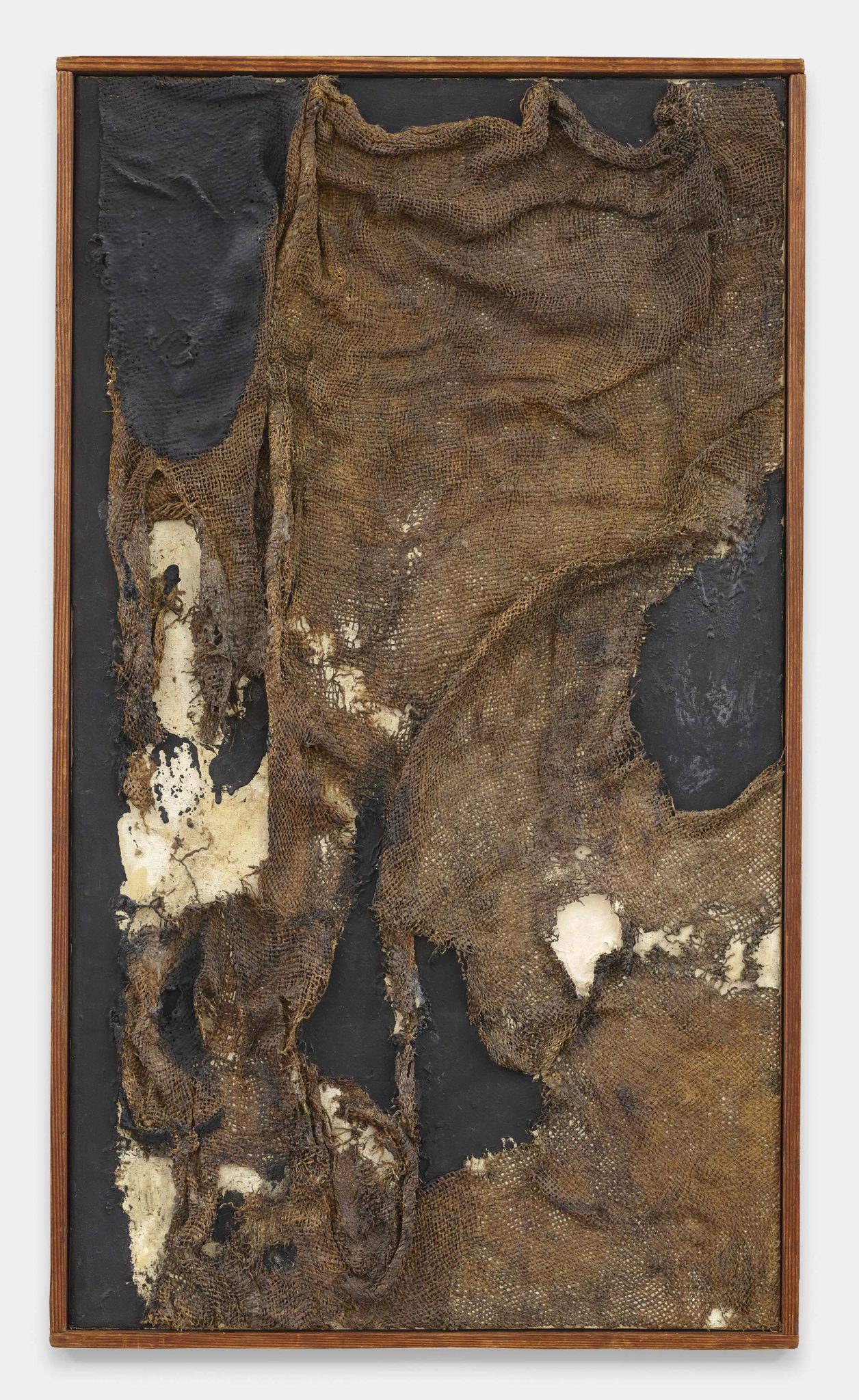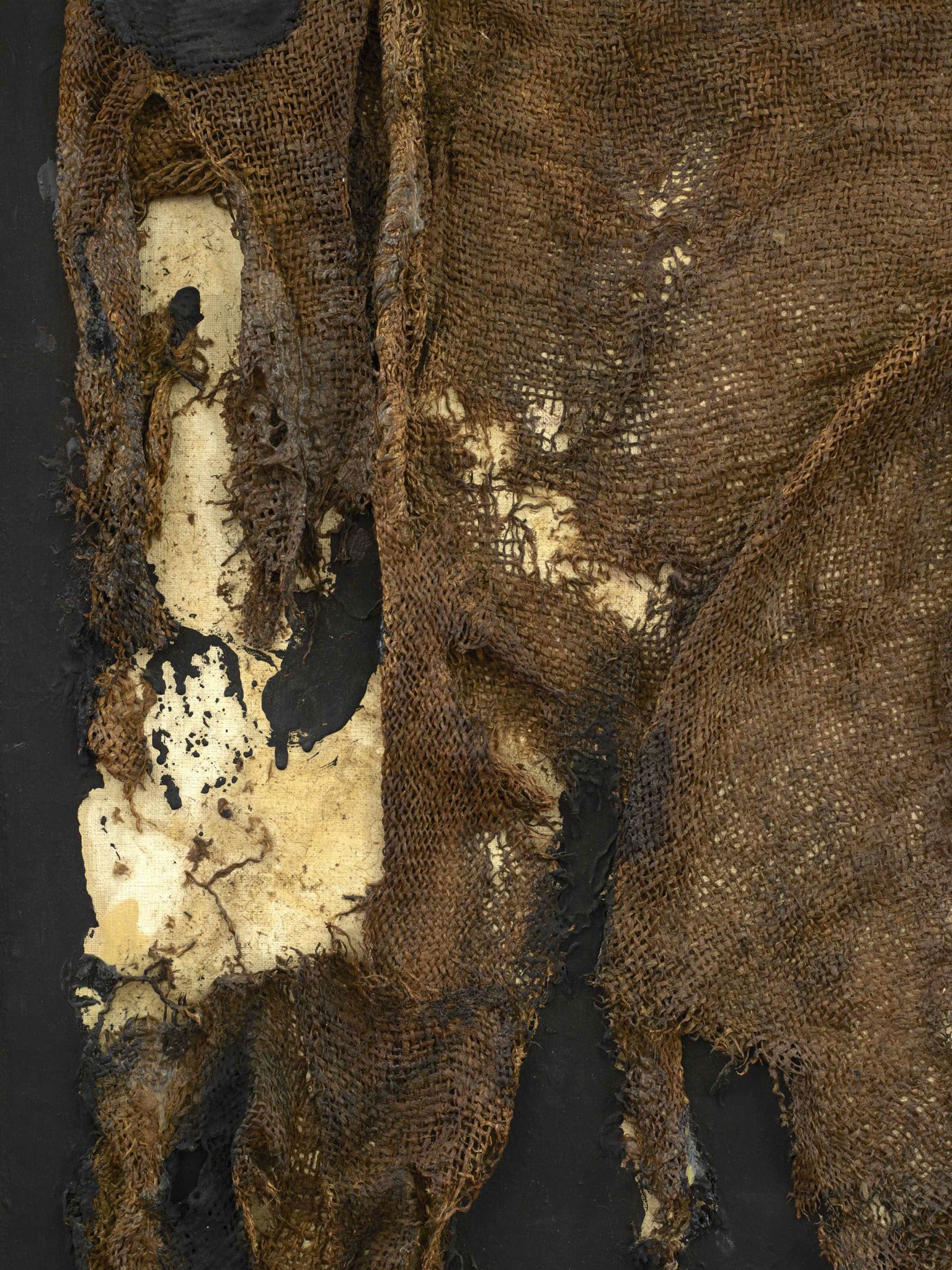Alberto Burri | Sacco (Sack)
Sacco (Sack)
1956
Oil and Vinavil on burlap and canvas
27 1/2 x 15 3/4 inches (69.8 x 40 cm)
© 2019 / Artists Rights Society (ARS), New York / SIAE, Rome
Photo: Elisabeth Bernstein
As a medic for the Royal Italian Army during the Second World War, Alberto Burri would have used burlap for innumerable purposes, and he employed it again for his first works—paintings on gunny sacks found at the camp where he was interned as a POW in Hereford, Texas. After his reparation, while in Rome, Burri sourced burlap sacks from the local mill in his hometown in Perugia, and these textiles would comprise the primary medium for his Sacchi (1950–1956). To create each Sacco, the artist experimented with needlework on industrially fabricated jute to achieve desired folds, reliefs, and contours. Burri developed his sewing skills during his practice as a physician, and many of his stitching techniques replicate those of skin grafting. Each Sacco began as an assemblage, wherein Burri joined various elements together, incorporating scraps of cotton, linen, canvas, and nylon, manipulating and amending his materials from both recto and verso perspectives. The surfaces of Burri’s Sacchi recall the ravages of war on earth, bodies, and psyches alike. Curator and art historian Emily Braun succinctly appraises the artist’s technical skill and innovative reflection on the ongoing repercussions of trauma: “Burri’s penchant for sutures, patches, and other meticulously wrought types of adhesions in his art was not a form of traumatic repetition but the expressive means to achieve a new material realism.”


